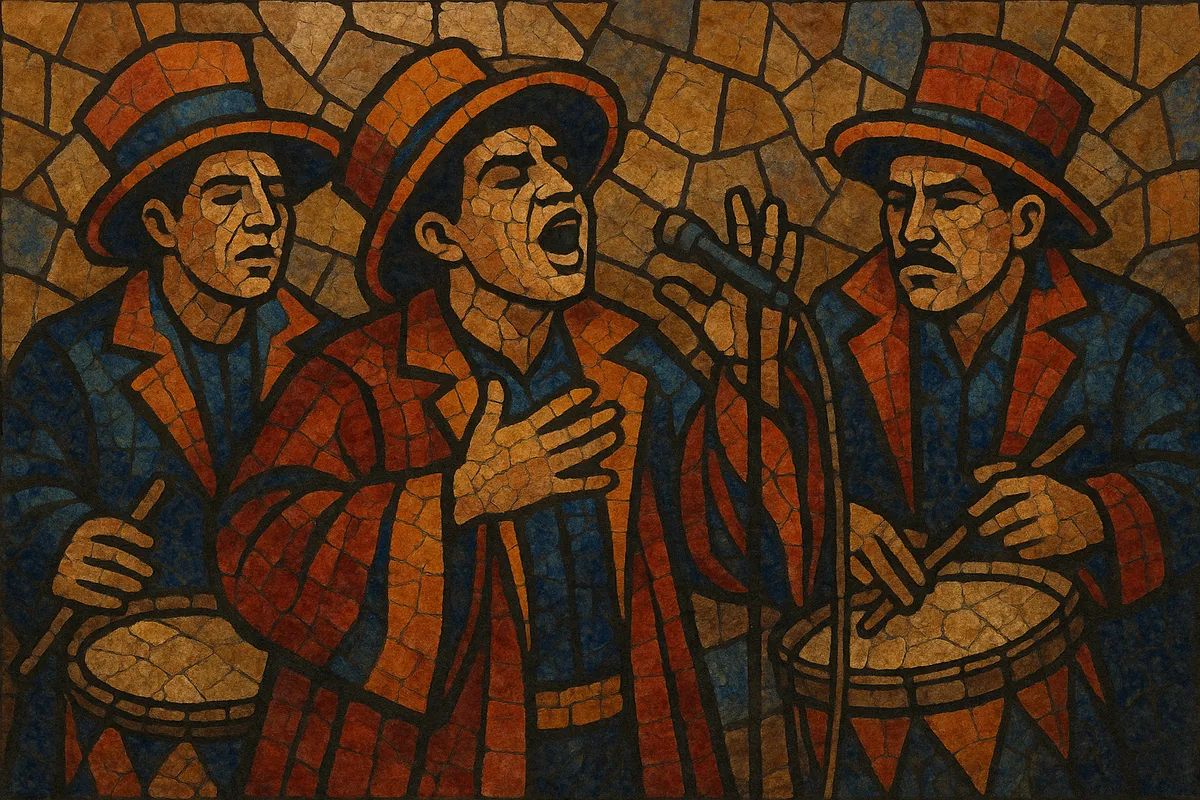Murga is a carnival-rooted performance genre that blends choral singing, sharp social satire, and highly rhythmic street percussion. Typically presented by neighborhood troupes, it combines theatrical staging, elaborate costumes, and choreographed movement with a driving, snare-led groove.
Although it has variants across the Hispanic world, murga is especially associated with the Río de la Plata region, where its sound crystallized into massed chorus, rapid-fire "cuplés" (satirical couplets), and set pieces that open (saludo) and close (retirada) each show. The tone ranges from festive and humorous to bitingly political, all delivered with bold vocal projection and call-and-response energy.
Murga took shape in the early 1900s within the Río de la Plata carnival tradition, absorbing elements from Spanish carnival song (via Cádiz), neighborhood choral culture, and Afro-Rioplatense rhythms (notably candombe). Early ensembles experimented with satirical couplets and processional percussion, setting the foundation for a street-theatre form that moved seamlessly between parody and social critique.
By the mid-20th century, the format solidified: a compact percussion battery (bass drum, snare, and cymbals), a large mixed-voice chorus delivering close-harmony refrains, and a sequence of numbers—customarily a "saludo" to open, a central body of cuplés and topical sketches, and a "retirada" to close. Costuming (tailcoats, face paint, hats) and coordinated dance steps accentuated murga’s visual identity.
From the late 20th century onward, murga troupes professionalized stagecraft and expanded lyrical scope, while still foregrounding neighborhood identity and satire. Crossovers with rock, ska, and other popular styles brought murga’s rhythms and choral hooks to broader audiences, and festival circuits helped spread the form while retaining its carnival heart.


